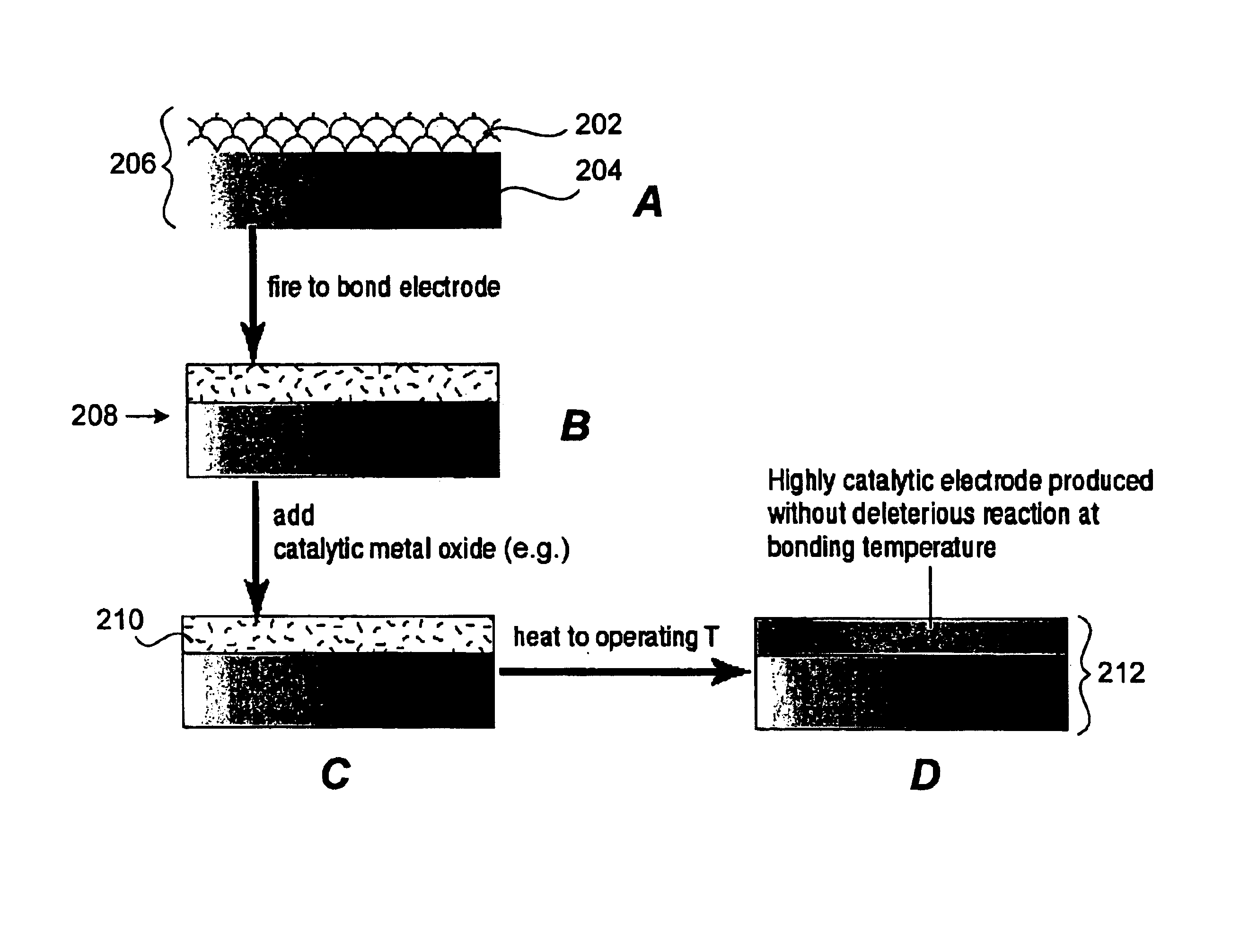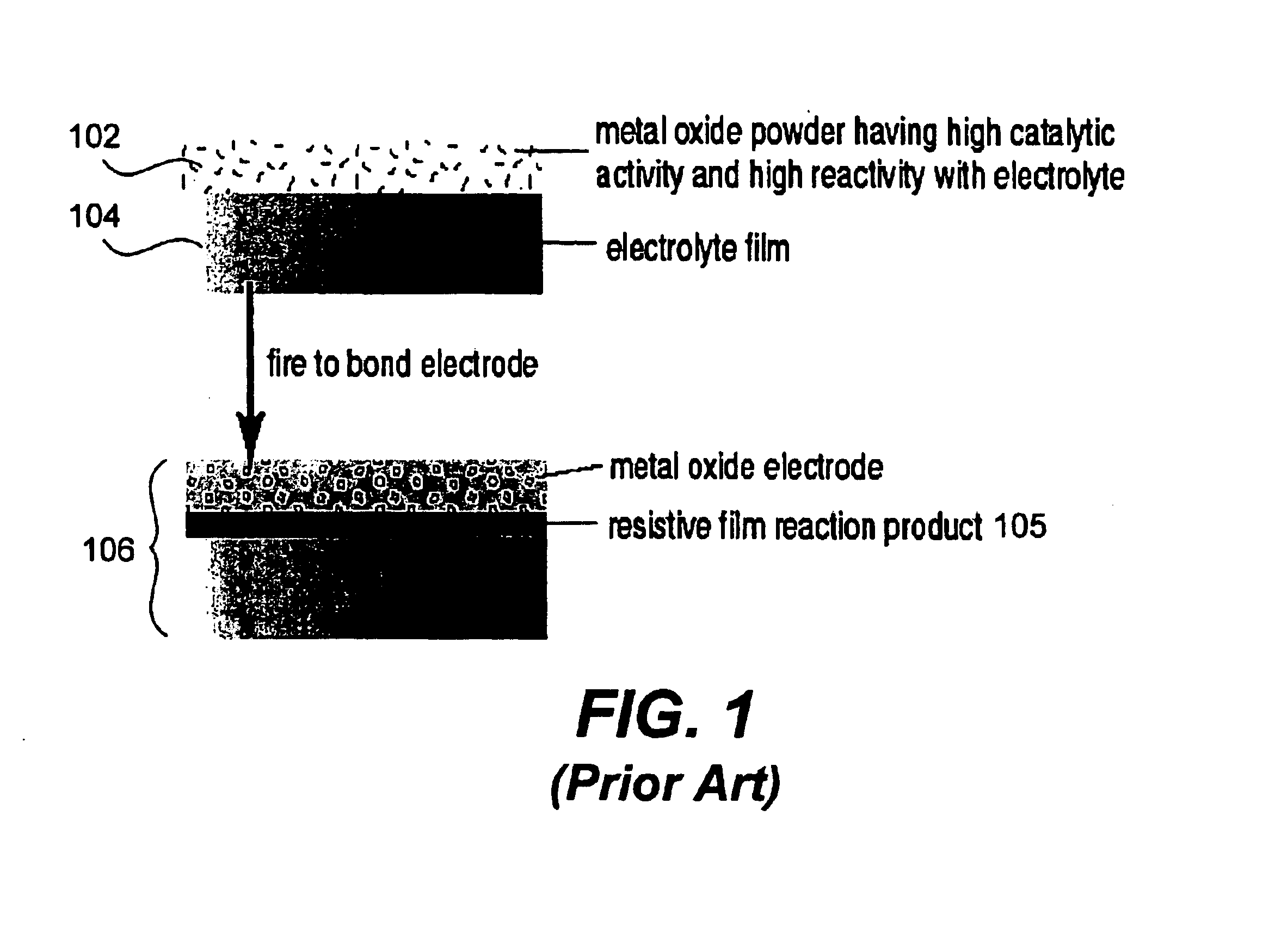Method of making a layered composite electrode/electrolyte
- Summary
- Abstract
- Description
- Claims
- Application Information
AI Technical Summary
Benefits of technology
Problems solved by technology
Method used
Image
Examples
Example
EXAMPLE
The following example illustrates aspects and features of a specific implementation in accordance with the present invention. It should be understood the following is representative only, and that the invention is not limited by the detail set forth in this example.
A 1 cm×1 cm Pt electrode (previously fired to 950° C. to bond Pt to electrolyte) was tested on YSZ electrolyte at 900° C. LSM-YSZ was used as the counter electrode. Then a mixture of Co, Sr, Ce, and Ni nitrates dissolved in distilled water were applied to the Pt electrode and allowed to dry under a heat lamp. The sample was again placed in a furnace and heated. Impedance spectra was taken at 900° C. FIG. 3 shows plots of the impedance spectra for the Pt electrode without additives (large arc) and Pt electrode with surface additives (small arc). The example shows the effect of a bare porous metal electrode, Platinum, with and without the addition of metal nitrate salts. The reduction in the size of the impedance arc...
PUM
| Property | Measurement | Unit |
|---|---|---|
| Temperature | aaaaa | aaaaa |
| Electrical conductivity | aaaaa | aaaaa |
| Electrical conductor | aaaaa | aaaaa |
Abstract
Description
Claims
Application Information
 Login to View More
Login to View More - R&D
- Intellectual Property
- Life Sciences
- Materials
- Tech Scout
- Unparalleled Data Quality
- Higher Quality Content
- 60% Fewer Hallucinations
Browse by: Latest US Patents, China's latest patents, Technical Efficacy Thesaurus, Application Domain, Technology Topic, Popular Technical Reports.
© 2025 PatSnap. All rights reserved.Legal|Privacy policy|Modern Slavery Act Transparency Statement|Sitemap|About US| Contact US: help@patsnap.com



